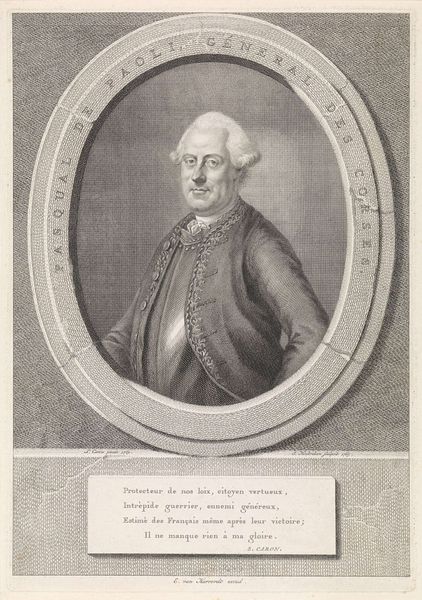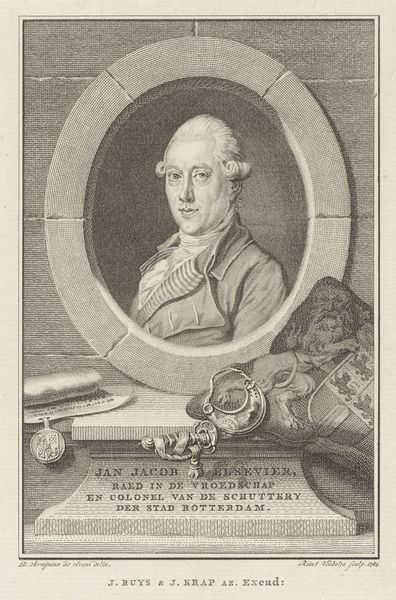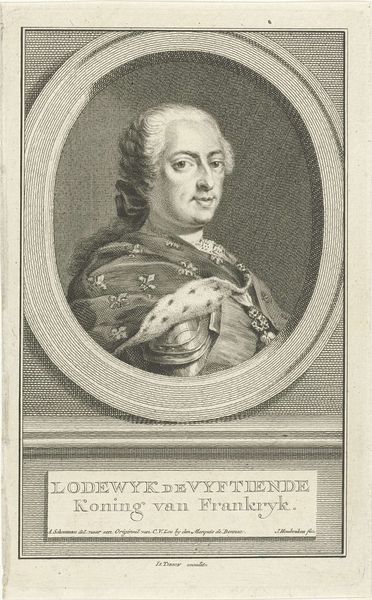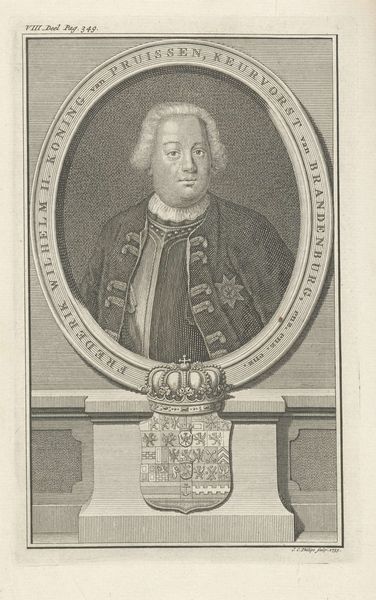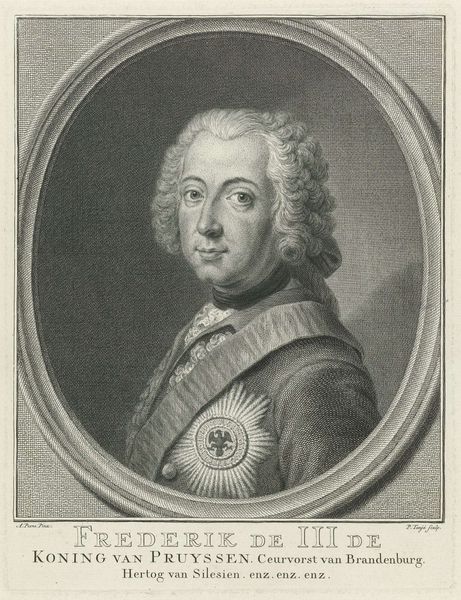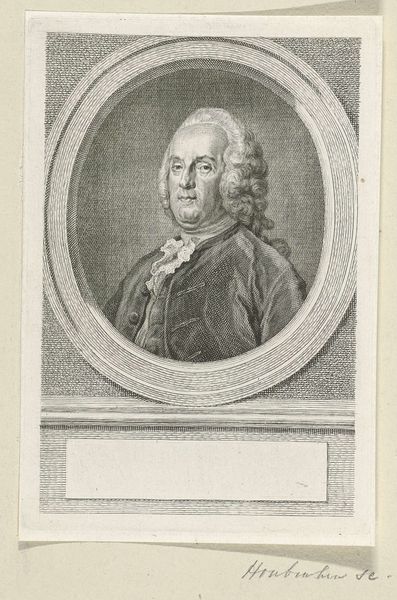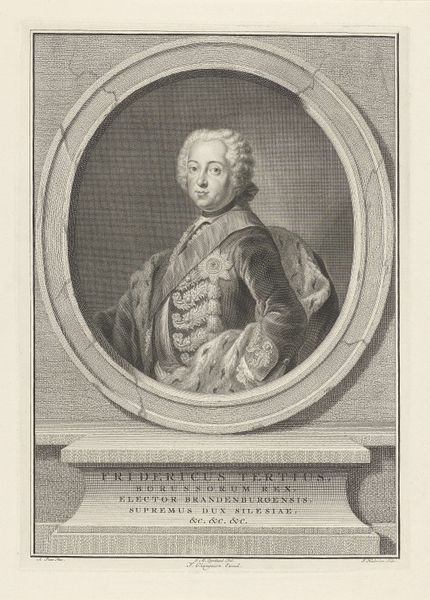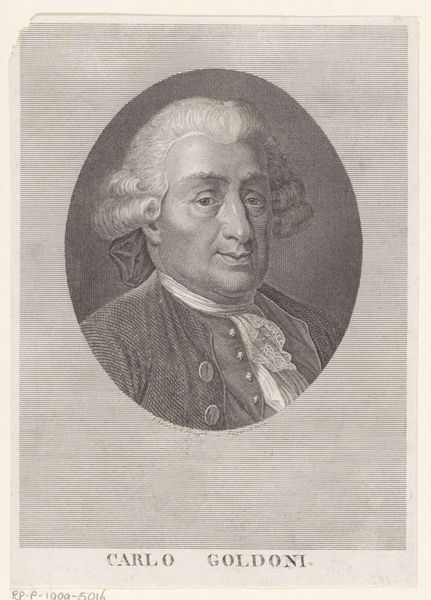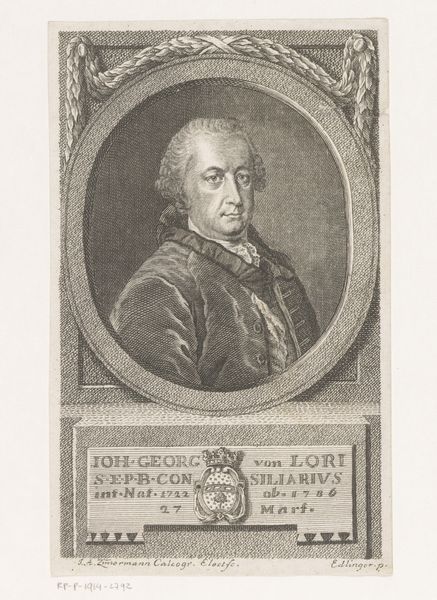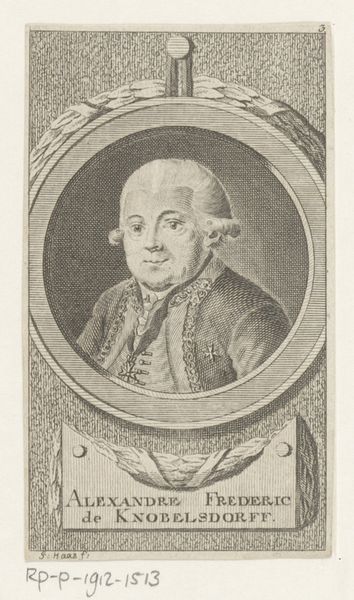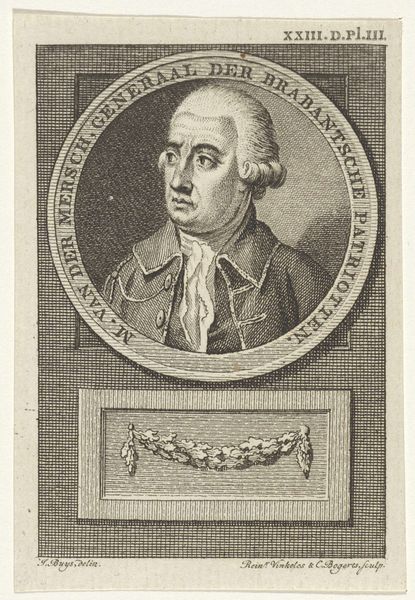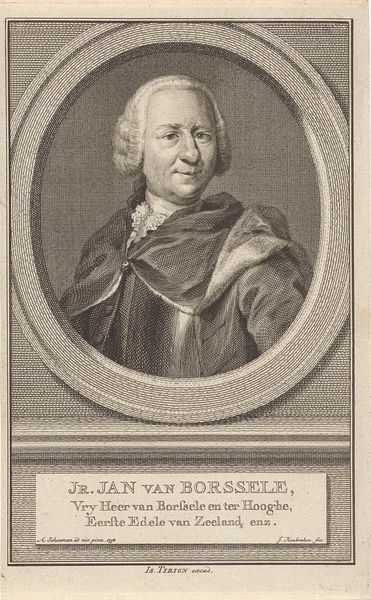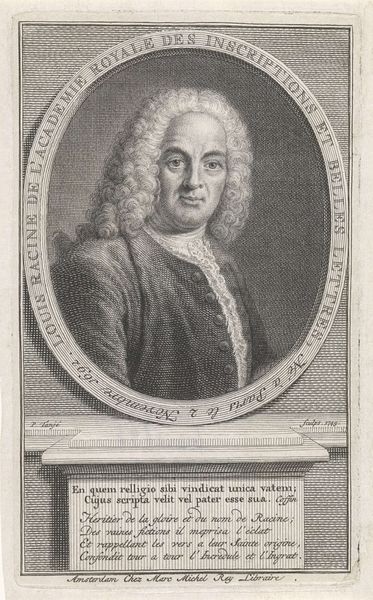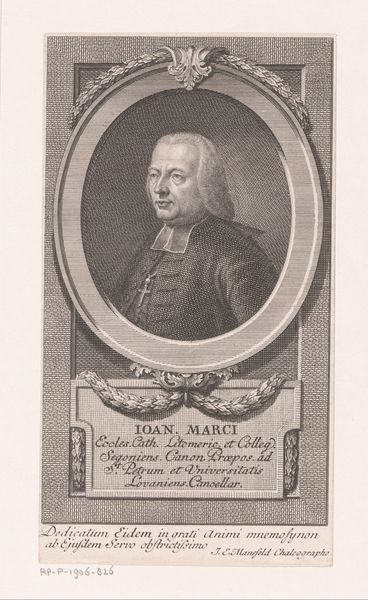
Dimensions: height 166 mm, width 104 mm
Copyright: Rijks Museum: Open Domain
Editor: So, this is a 1770 engraving by Jacob Houbraken titled "Portret van Pasquale Paoli." It's quite formal, very baroque in its presentation, wouldn’t you say? What strikes me is the detail in the clothing versus the relative smoothness of the face. What do you see in this piece? Curator: Well, immediately I think about the context. By the late 18th century, prints like these were crucial for disseminating images of important political figures. Paoli was a Corsican patriot and general, a figurehead for republican ideals and resistance against Genoese and, later, French rule. Consider the political climate and the function of this image, and whether that was propaganda. How does it portray Paoli? Editor: As a powerful, respected figure, definitely. The oval frame gives it a sense of importance. But wasn't Corsica a point of contention between different powers? Curator: Exactly! The image plays a role in shaping public opinion and lending legitimacy to Paoli's cause. We can see this work not just as a portrait, but as a statement on the politics of liberty and resistance in the late 18th century. Consider its relationship to the print market. Who was commissioning these? Editor: So it's less about capturing a likeness and more about constructing a political persona? I hadn't thought about prints being used like that, so overtly. It really puts the "portrait" into a new, social context for me. Curator: Precisely! The Rijksmuseum showing it speaks volumes about how they contextualize it today, shifting meanings across time.
Comments
No comments
Be the first to comment and join the conversation on the ultimate creative platform.
